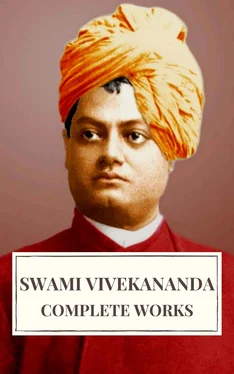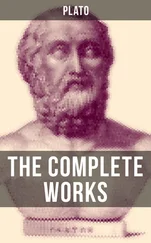It is very easy to believe that the Hindus, who have been declining for seven hundred years, were highly civilised in the past. We cannot prove that it is not so.
There is not one single instance of any civilisation being spontaneous. There was not a race in the world which became civilised unless another civilised race came and mingled with that race. The origin of civilisation must have belonged, so to say, to one or two races who went abroad, spread their ideas, and intermingled with other races and thus civilisation spread.
For practical purposes, let us talk in the language of modern science. But I must ask you to bear in mind that, as there is religious superstition, so also there is a superstition in the matter of science. There are priests who take up religious work as their speciality; so also there are priests of physical law, scientists. As soon as a great scientist’s name, like Darwin or Huxley, is cited, we follow blindly. It is the fashion of the day. Ninety-nine per cent of what we call scientific knowledge is mere theories. And many of them are no better than the old superstitions of ghosts with many heads and hands, but with this difference that the latter differentiated man a little from stocks and stones. True science asks us to be cautious. Just as we should be careful with the priests, so we should be with the scientists. Begin with disbelief. Analyse, test, prove everything, and then take it. Some of the most current beliefs of modern science have not been proved. Even in such a science as mathematics, the vast majority of its theories are only working hypotheses. With the advent of greater knowledge they will be thrown away.
In 1400 B.C. a great sage made an attempt to arrange, analyse, and generalise upon certain psychological facts. He was followed by many others who took up parts of what he had discovered and made a special study of them The Hindus alone of all ancient races took up the study of this branch of knowledge in right earnest. I am teaching you now about it, but how many of you will practice it? How many days, how many months will it be before you give it up? You are impractical on this subject. In India, they will persevere for ages and ages. You will be astonished to hear that they have no churches, no Common Prayers, or anything of the kind; but they, every day, still practice the breathings and try to concentrate the mind; and that is the chief part of their devotion. These are the main points. Every Hindu must do these. It is the religion of the country. Only, each one may have a special method — a special form of breathing, a special form of concentration, and what is one’s special method, even one’s wife need not know; the father need not know the son’s. But they all have to do these. And there is nothing occult about these things. The word “occult” has no bearing on them. Near the Gangâ thousands and thousands of people may be seen daily sitting on its banks breathing and concentrating with closed eyes. There may be two reasons that make certain practices impracticable for the generality of mankind. One is, the teachers hold that the ordinary people are not fit for them. There may be some truth in this, but it is due more to pride. The second is the fear of persecution. A man, for instance, would not like to practice breathing publicly in this country, because he would be thought so queer; it is not the fashion here. On the other hand, in India. if a man prayed, “Give us this day our daily bread”, people would laugh at him. Nothing could be more foolish to the Hindu mind than to say, “Our Father which art in Heaven.” The Hindu, when he worships, thinks that God is within himself.
According to the Yogis, there are three principal nerve currents: one they call the Idâ, the other the Pingalâ, and the middle one the Sushumnâ, and all these are inside the spinal column. The Ida and the Pingala, the left and the right, are clusters of nerves, while the middle one, the Sushumna, is hollow and is not a cluster of nerves. This Sushumna is closed, and for the ordinary man is of no use, for he works through the Ida and the Pingala only. Currents are continually going down and coming up through these nerves, carrying orders all over the body through other nerves running to the different organs of the body.
It is the regulation and the bringing into rhythm of the Ida and Pingala that is the great object of breathing. But that itself is nothing — it is only so much air taken into the lungs; except for purifying the blood, it is of no more use. There is nothing occult in the air that we take in with our breath and assimilate to purify the blood; the action is merely a motion. This motion can be reduced to the unit movement we call Prâna; and everywhere, all movements are the various manifestations of this Prana. This Prana is electricity, it is magnetism; it is thrown out by the brain as thought. Everything is Prana; it is moving the sun, the moon, and the stars.
We say, whatever is in this universe has been projected by the vibration of the Prana. The highest result of vibration is thought. If there be any higher, we cannot conceive of it. The nerves, Ida and Pingala, work through the Prana. It is the Prana that is moving every part of the body, becoming the different forces. Give up that old idea that God is something that produces the effect and sits on a throne dispensing justice. In working we become exhausted because we use up so much Prana.
The breathing exercises, called Prânâyâma, bring about regulation of the breathing, rhythmic action of the Prana. When the Prana is working rhythmically, everything works properly. When the Yogis get control over their own bodies, if there is any disease in any part, they know that the Prana is not rhythmic there and they direct the Prana to the affected part until the rhythm is re-established.
Just as you can control the Prana in your own body, so, if you are powerful enough, you can control, even from here another man’s Prana in India. It is all one. There is no break; unity is the law. Physically, psychically, mentally, morally, metaphysically, it is all one. Life is only a vibration. That which vibrates this ocean of ether, vibrates you. Just as in a lake, various strata of ice of various degrees of solidity are formed, or as in an ocean of vapour there are various degrees of density, so is this universe an ocean of matter. This is an ocean of ether in which we find the sun, moon, stars, and ourselves — in different states of solidity; but the continuity is not broken; it is the same throughout.
Now, when we study metaphysics, we come to know the world is one, not that the spiritual, the material, the mental, and the world of energies are separate. It is all one, but seen from different planes of vision. When you think of yourself as a body, you forget that you are a mind, and when you think of yourself as a mind, you will forget the body. There is only one thing, that you are; you can see it either as matter or body — or you can see it as mind or spirit. Birth, life, and death are but old superstitions. None was ever born, none will ever die; one changes one’s position — that is all. I am sorry to see in the West how much they make of death; always trying to catch a little life. “Give us life after death! Give us life!” They are so happy if anybody tells them that they are going to live afterwards! How can I ever doubt such a thing! How can I imagine that I am dead! Try to think of yourself as dead, and you will see that you are present to see your own dead body. Life is such a wonderful reality that you cannot for a moment forget it. You may as well doubt that you exist. This is the first fact of consciousness — I am. Who can imagine a state of things which never existed? It is the most self-evident of all truths. So, the idea of immortality is inherent in man. How can one discuss a subject that is unimaginable? Why should we want to discuss the pros and cons of a subject that is self-evident?
Читать дальше












